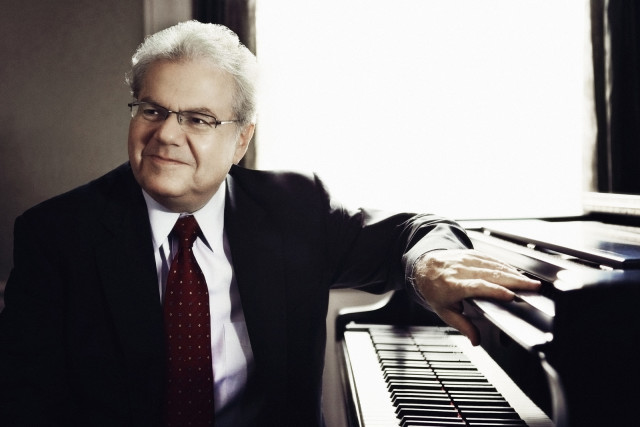Review: Emanuel Ax with the Oregon Symphony

Image: Lisa Marie Mazzucco
This weekend's symphony concert assembled masterworks from two of the greats with a lesser-known work by a lesser-known composer.
Performances by Canadian pianist Emanuel Ax were at the heart of the program, and Ax and company delivered a beautiful interpretation of Bach's D Minor concerto. The roll of the soloist here is more that of an ensemble chamber musician and less of a virtuosos performer, and Ax fit the bill perfectly. His many years as an accompanist to superstar cellist YoYo Ma and others were good training for such music making, and he performed with his characteristic warm tone, delightfully detailed color, and intricate interplay with his fellow musicians. One might have wanted a slower tempo in the middle movement, or more focus in the recitative, but such matters are up to artistic interpretation and this was excellent music making.
In stark contrast to the Baroque master, the Burleske by Richard Strauss also featured Ax as soloist in this rarely performed work by the late romantic composer. In this one-movement work written by the 21-year-old Strauss in 1894, fans of the composer will hear foreshadows of later works: the comic rhetoric of Till Eulenspiegel or the mercurial changes of mood characteristic of tone poems like Eine Alpensinfonie and operas like Der Rosenkavalier. One also wonders if Strauss took inspiration from Brahms' Piano Concerto No. 2, which premiered four years earlier and whose finale features a similarly light, even comical, theme. Ax seemed at home in the roll of virtuoso soloist here as well, delivering the dense passages, introspective solos, and effervescent glissandos with equal aplomb.
The program was book-ended by two late works that showed very different sides of Beethoven. Originally composed as the finale to his string quartet op. 130, the Große Fugue was rejected by his publisher due to its extreme length (nearly 15 minutes), relentless rhythms, and nearly atonal harmony. Despite, or perhaps because of this, the "great fugue" has thrived as a standalone work and is seen as masterpiece of the genre and a precursor to twentieth century music. The Russian musical revolutionary Igor Stravinsky noted that "[it is] an absolutely contemporary piece of music that will be contemporary forever."
It was heard here in an arrangement for string orchestra by the Austrian conductor Felix von Weingartner, which preserved the original string quartet scoring with prudent addition of double basses in some passages. The arrangement for a symphonic ensemble civilized this work somewhat, the larger forces tend to soften the rougher edges of this brilliant but difficult piece, and the symphony's string section delivered a compelling argument for this reading. Fans of this performance will also want to hear Leonard Bernstein's recording of Beethoven's Op 131 and 135 quartets with the Vienna Philharmonic on Deutsche Grammophon.
If the Große Fugue showed Beethoven's stormy side, then his Eighth Symphony concluded the program with sunshine and light. Often overshadowed by its larger siblings—the pastoral sixth, the propulsive seventh (which will be performed by the Oregon Symphony Feb 10), and the sprawling, monumental ninth—the eight is almost miniature in comparison. But within minutes of the buoyant opening phrase, we find ourselves in Beethoven's familiar musical world of high drama—it's clear that while this work is light hearted, it is not light weight. The Oregon Symphony offered a rich, taut performance with a particularly fine execution in the breakneck finale.
